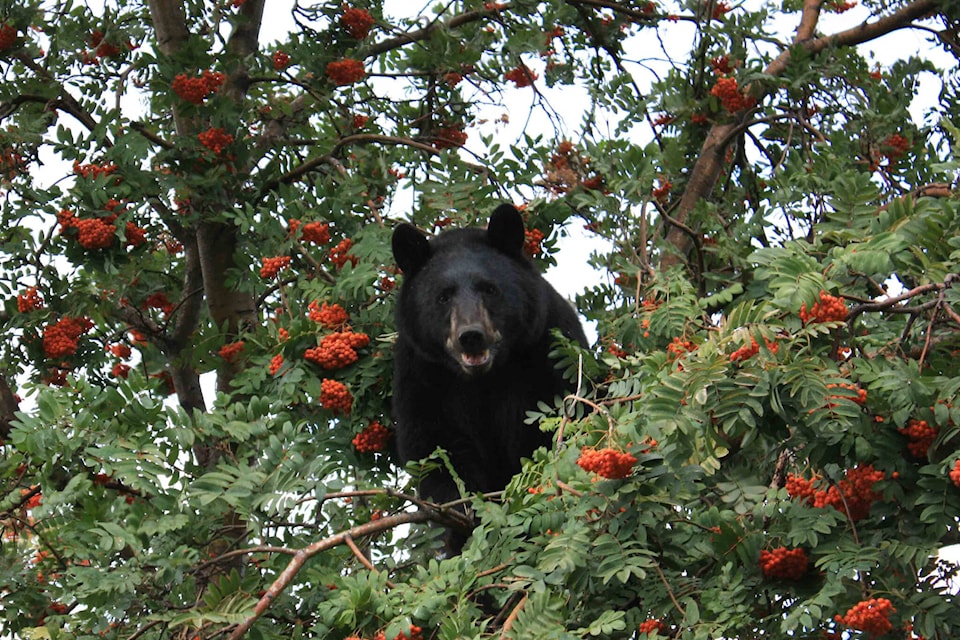WildSafeBC is asking the residents of Creston and the surrounding areas to pick their fruit and nut trees clean in an effort to deter bears from feeding in our backyards.
Although there is a lot of talk about bears and garbage, it is important for people to realize how much of an issue fruit and nut trees can be if they are not cared for with wildlife in mind, particularly in an area so rich in food-bearing trees such as the Creston Valley. Even ornamental fruit may be a food source for bears in town.
Fruit and nut trees are often cherished for their blossoms and food value. They can also be part of a local food strategy. However, neglected trees can draw bears and other wildlife into communities. Domestic fruit and nut trees are unnatural food sources for bears and other wildlife. They are highly dense in calories and can lead to food conditioning.
Food conditioning is a learned behaviour where animals begin to associate people and their property with a food reward. Bears may go after fruit before it is fully ripe and will often return year-after-year. They can damage tree branches, fences, and other property in the process. We often plant fruit/nut trees close to our homes. This can also draw bears into our neighbourhoods, which puts us, and others, at risk of a dangerous wildlife encounter. Once the harvest wanes, a food-conditioned and human-habituated bear may turn to other sources of food nearby, such as garbage. This can lead to poor outcomes for that bear such as vehicle collisions or injury from eating dangerous items.
Bears that forage for food in communities may become more assertive and this can lead to damaged property, bears entering enclosed spaces, and safety concerns for the community. Hundreds of bears are destroyed every year as a result of food conditioning. The best way to keep people and wildlife safe is to prevent wildlife from accessing human sources of food.
Simple solutions to this problem include picking fruit and allowing it ripen indoors or to pick fruit daily as it ripens. Cleaning up windfall is also very important, as is pruning trees to control growth (making them easier to harvest.) Connect with community gleaning groups to donate excess fruit or to have your fruit gleaned (picked) for you. In Creston, you can contact the Creston Food Action Coalition about their Harvest Share program at crestonharvestshare@gmail.com or through their facebook page. They are also always looking for volunteers to pick and process food, so please consider donating your time.
If you do not want your trees to produce fruit, prune the tree vigorously or spray spring blossoms with a garden hose to knock the blossoms off the tree. Even consider replacing your tree with a native, non-fruit, or nut-free variety.
Electric fencing is also a simple way to protect your food-bearing trees from wildlife. Visit our website at wildsafebc.com/electric-fencing to view electric fencing guidelines and checklists.
Please report wildlife conflicts to the Conservation Officer Service at 1-877-952-7277. Residents can also report wildlife conflicts online through WildSafeBC’s Wildlife Alert Reporting Program at warp.wildsafebc.com. This program allows you to see what wildlife has been reported in your neighbourhood and be alerted of new sightings.
